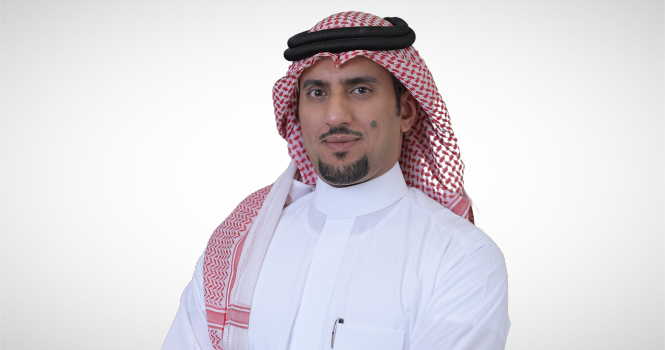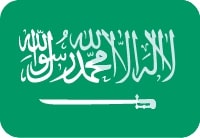ENGIE eyes expansion in Saudi Arabia as investments hit $9 billion

Mohammed Al-Hajjaj, CEO of ENGIE Saudi Arabia
Mohammed Al-Hajjaj, CEO of ENGIE Saudi Arabia, said the Kingdom has become ENGIE’s largest market in the Middle East and North Africa (MENA region), accounting for about 23% of its regional installed capacity. ENGIE has a $9 billion investment portfolio in the Kingdom, which includes 7.6 gigawatts of power generation capacity and 1.8 million cubic meters per day of desalinated water, equivalent to 8% of Saudi Arabia’s total power generation and 17% of its desalination capacity.
In an interview with Argaam, Al-Hajjaj said over the past two decades, ENGIE has strengthened its presence in the Kingdom through major energy, renewables, and water projects. The company now plans to expand investments in the coming years to capture expected growth in the Saudi electricity and desalination market, which is projected to grow 5.8% annually.
In a related context, ENGIE said it is gearing up to expand its renewable energy operations in Saudi Arabia, in line with the Kingdom’s target to raise its capacity to 130 gigawatts by 2030. The company added that its global strategy aims to reach 95 gigawatts (GW) of renewable energy capacity, after achieving an installed capacity of 52.7 GW globally by mid-2025.
The company also highlighted the success of its partnership with the National Energy Services Company (Tarshid) through the implementation of 22 projects aimed at improving energy efficiency in government buildings and public facilities.
Q: What percentage does Saudi Arabia represent in ENGIE’s investment portfolio in MENA, and how will your investments grow over the coming years in renewable energy, gas, and water desalination?
A: Saudi Arabia is our largest market in MENA, representing about 23% of ENGIE’s installed power generation capacity in the region.
We have built a strong presence in the Kingdom over the past 20 years, with an investment portfolio valued at $9 billion. We have invested in the development, construction, and operation of power plants with a total capacity of 7.6 GW, and desalination capacity of 1.8 million cubic meters per day. This represents 8% of Saudi Arabia’s total power generation capacity and 17% of its desalination capacity, making us a strategic partner in supporting the Kingdom’s energy and water security.
We expect renewable energy sources—particularly solar and wind—to record the fastest growth in our portfolio over the next three to five years, supported by battery energy storage systems to enhance grid stability. Meanwhile, gas-fired power plants will continue to play a key role in ensuring reliability, with open-cycle (OCGT) and combined-cycle (CCGT) gas turbines remaining essential in balancing renewable energy sources and meeting industrial power demand.
Furthermore, we plan to improve the efficiency of water desalination operations by integrating renewable energy sources. Saudi Arabia will retain the largest share of our regional investments, with additional capital earmarked for renewable energy projects, while maintaining our strong role in flexible power and desalinated water production.
Q: In light of expectations that Saudi Arabia’s energy market will see a 5-year CAGR of 5.8%, how is ENGIE preparing to expand its market share in the Kingdom’s utilities projects?
A: ENGIE has long been a reliable partner of Saudi Arabia. This confidence has been further strengthened with the opening of our regional headquarters in the Kingdom.
At ENGIE, we follow a clear strategy focused on areas where we hold distinct strengths — including renewable energy, battery energy storage, flexible power generation, energy efficiency, and water desalination. By combining our global expertise with a strong track record of successful project delivery, we will continue to compete for major tenders and execute projects that directly contribute to Saudi Vision 2030 objectives.
Over the past five years, we have worked to expand and diversify our presence in Saudi Arabia’s energy sector through major renewable and critical infrastructure projects, transforming ENGIE from a traditional utilities operator into a core and long-term partner in the Kingdom’s broad energy transition journey.
ENGIE also focuses on knowledge transfer, expertise sharing, and local talent development as part of its ongoing commitment to support the growth of Saudi Arabia’s energy sector — a journey driven by national ambition and backed by the experience of global partners, among whom we are proud to count ourselves as a leading international provider of sustainable, reliable, and affordable energy solutions.
Q: Saudi Arabia has set a target to ramp up its renewable energy capacity to 130 GW by 2030, adding about 20 GW annually. How can ENGIE contribute to this target, and what is your current installed and secured capacity in renewables within the Kingdom and globally?
A: Our journey in the Saudi renewable energy sector is still in its early stages, but we see tremendous potential to expand our generation capacity in this field. It is a strategic priority for ENGIE, and we are preparing to compete actively in upcoming renewable energy tenders and projects.
ENGIE aims to increase its global installed renewable energy capacity to 95 GW by 2030. As of mid-2025, the company has already achieved 52.7 GW of installed renewable energy and battery storage capacity.
The company has extensive experience spanning several decades across various fields, including solar energy, wind power, and energy storage, which cemented its position as one of the largest renewable energy developers globally and one of the most experienced companies in energy transition.
These global capabilities strengthen our position as a strategic partner to the Kingdom, especially amid the strong momentum in the Saudi market, where leading international players are competing to enter, invest, and share their expertise. At ENGIE, we are keen to be an active part of this dynamic growth.
Q: What is ENGIE’s vision for utility-scale battery energy storage system (BESS) projects in the Kingdom?
A: Battery energy storage systems (BESS) are a key enabler of the energy transition, as they enhance grid stability, compensate for fluctuations in renewable energy generation, and provide flexibility to both operators and off-takers.
ENGIE has a proven global track record in developing, operating, and optimizing BESS projects, with a combined installed capacity of 52.7 GW from renewable energy and battery storage as of June 2025. We take pride in transferring this expertise to the Kingdom.
Our vision in Saudi Arabia goes beyond standalone storage, focusing instead on integrated hybrid solutions — combining batteries with solar or wind farms to create hybrid power plants. This model enhances asset efficiency, ensures greater reliability, and reduces total system costs.
For a market like Saudi Arabia, which targets 130 GW of renewable energy generation by 2030, hybrid projects will be a cornerstone for ensuring the availability of clean energy anytime, anywhere.
ENGIE is fully equipped to help advance battery energy storage projects in the Kingdom, positioning them as a cornerstone of a resilient and sustainable national grid, leveraging both our global expertise and strong local partnerships.
Q: The gas-to-power market remains vital in Saudi Arabia for meeting base-load demand and providing transitional energy sources. How do you assess the development of hybrid (gas–renewables) systems?
A: ENGIE plays a key role in Saudi Arabia’s gas-based power generation sector, with an asset portfolio totaling 7.6 GW of installed capacity. These assets provide reliable base-load power and operational flexibility, both critical for the Kingdom’s fast-growing electricity market, which is expected to expand at a CAGR of 5.8% over the next five years.
ENGIE views gas as a practical transitional energy source, offering reliable power today while being adaptable within a future carbon-free energy system. By delivering dispatchable and high-efficiency power, gas-fired plants facilitate the integration of solar and wind energy into the grid — accelerating renewable deployment while maintaining system reliability.
Our future vision focuses on two complementary pathways, the first is combinedcycle gas turbine (CCGT) plants, where all new projects must include a firm commitment to carbon capture, utilization, and storage (CCUS).
The second is open cycle gas turbine (OCGT) plants, which provide reliable backup power for intermittent renewables, especially when paired with battery storage systems.
Globally, ENGIE is exploring hybrid models that combine gas, renewables, and storage into a single integrated system — an approach that holds particular promise for Saudi Arabia, balancing energy reliability with emission-reduction goals. Our global experience in developing such models positions us to deliver sustainable solutions that ensure grid stability today and pave the way for low-carbon operations in the future.
Q: What is your current operational capacity in the Kingdom, and what major projects are underway?
A: ENGIE is proud to be one of the largest private-sector partners in Saudi Arabia’s water desalination projects. We currently operate plants with a total capacity of 1.8 million cubic meters per day, representing around 17% of the Kingdom’s total desalinated water production, in addition to 7.6 GW of power generation capacity — making us a strategic contributor to both energy and water security in Saudi Arabia.
We also leverage advanced technologies such as artificial intelligence (AI), the Internet of Things (IoT), and smart analytics platforms — including ENGIE’s own intelligent operations and maintenance systems — to optimize desalination performance across the Kingdom.
Beyond operational efficiency, these tools enhance safety and reliability by using AI to analyze performance data and detect early warning signs of potential issues. Through digital monitoring and smart updates, ENGIE ensures its facilities operate at maximum efficiency, fostering a safe, comfortable working environment and offering greater flexibility for asset owners.
For the next phase, we will focus on developing a set of pioneering projects that go beyond merely expanding production capacity, emphasizing efficiency, sustainability, and innovation in the treatment of brine solutions resulting from desalination.
We also see promising opportunities in hybrid projects that integrate water desalination with renewable energy sources, while placing great importance on enhancing operational efficiency through full digitalization.
Our achievements in Saudi Arabia demonstrate the success of this strategy. Notable examples include the Jubail 3B plant, one of the world’s largest desalination plants partially powered by solar energy and Yanbu 4 project, a leading seawater desalination facility using reverse osmosis technology in the Kingdom. These projects illustrate how innovation and sustainability are integrated into large-scale developments. Such solutions form a cornerstone of our investment portfolio supporting Saudi Arabia’s ongoing efforts to increase water production capacity to meet population growth and industrial demand.
ENGIE aims to continue its successful journey based on this solid operational foundation, leveraging its global expertise in low-carbon water desalination to strengthen the Kingdom’s water sector and enhance its resilience, efficiency, and environmental commitment.
Q: How does ENGIE align its projects in Saudi Arabia and the region with ESG standards, and what reporting frameworks do you use to ensure compliance and transparency?
A: For ENGIE, ESG standards are not just a compliance requirement but a core component of our operations, from project design to financing and operation. All our projects in Saudi Arabia and across the region are aligned with international ESG standards, directly supporting the Saudi Vision 2030 goals of sustainability, economic diversification, and local value creation.
We benchmark our sustainability commitments against global frameworks such as the UN Global Compact, the Global Reporting Initiative (GRI), and the Sustainability Accounting Standards Board (SASB). We also ensure full alignment with the International Financial Reporting Standards (IFRS) and the International Sustainability Standards Board (ISSB), which are now key references for global capital markets.
Our ESG performance is regularly assessed by leading rating agencies, providing investors and partners with independent verification of our effectiveness. As part of our ambition to achieve carbon neutrality by 2045, we apply a strict carbon budgeting system to continuously assess greenhouse gas emissions, embedding climate considerations into every investment decision.
Practically, our projects in Saudi Arabia, whether in renewable energy, gas power generation, desalination, or energy efficiency, are evaluated from the early stages for their carbon footprint, biodiversity impact, social inclusion, and governance practices. Moreover, our “Never Compromise on Safety” standard forms a core part of our ESG framework. Rather than treating sustainability as an isolated activity, we fully integrate it into our commercial offerings.
We ensure transparency through our Integrated Annual Report, ESG disclosures, and an annual Sustainability Report. Additionally, we are developing regional sustainability reports to provide stakeholders in Saudi Arabia and the MENA region with a clear view of our progress. By combining global frameworks with local transparency, ENGIE remains a trusted partner in advancing Saudi Arabia’s energy transition goals.
Q: ENGIE collaborates with the National Energy Services Co. (Tarshid), How many projects have you secured under this partnership, and what impact do you expect from these contracts?
A: Energy efficiency is a key pillar of ENGIE’s global strategy, often representing the fastest and most cost-effective way to reduce emissions while lowering the operational costs of energy production. This strategy is embodied in our partnership with Tarshid in Saudi Arabia. ENGIE supports the Kingdom’s ambition to make public and government facilities more energy-efficient, in line with Saudi Vision 2030.
So far, we have secured 22 projects under our partnership with Tarshid, covering large-scale renovations and energy efficiency improvements across government buildings and public facilities. These initiatives have already delivered tangible results, saving 311 GWh of energy per year and reducing emissions by 177,000 metric tons of CO₂ equivalent annually. We also expect double-digit percentage reductions in energy consumption across the targeted assets, leading to significant financial savings and advancing Saudi Arabia’s decarbonization efforts.
From a broader perspective, this partnership represents a comprehensive framework in which Tarshid defines the vision and project scope, while ENGIE manages the implementation. This joint commitment is expected to deliver substantial, sustainable, and reliable progress toward achieving the Kingdom’s carbon reduction goals.
Comments {{getCommentCount()}}
Be the first to comment
رد{{comment.DisplayName}} على {{getCommenterName(comment.ParentThreadID)}}
{{comment.DisplayName}}

{{comment.ElapsedTime}}







Comments Analysis: